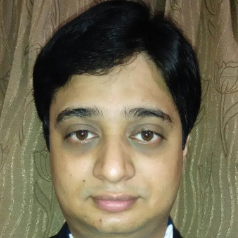International Journal of Modern Education and Computer Science (IJMECS)
IJMECS Vol. 8, No. 12, 8 Dec. 2016
Cover page and Table of Contents: PDF (size: 543KB)
Improvement in Copy -Move Forgery Detection Using Hybrid Approach
Full Text (PDF, 543KB), PP.56-63
Views: 0 Downloads: 0
Author(s)
Index Terms
Copy Move Forgery, SURF(Speed Up Robust Features), SIFT (Scale Invariant Feature Transform), DWT(Discrete Wavelet Transform)
Abstract
In this present digital world, digital pictures and videos are the main sources of information. However, these carriers of information can be easily tampered by using softwares such as Adobe photoshop, GIMP etc. Thus, the issue of verification of authenticity and integrity of digital images becomes necessary. Copy Move Forgery is a popular type of forgery that is commonly used for the manipulation of digital images. In this, a region of digital image is copied and then pasted to another location with in the same image with intension to make an object disappear from an image by covering it with small block copied from another part of the same image. There are several post processing operations that are applied by manipulators to obstruct the forgery detection techniques. Thus, for aforementioned problem, we in this paper proposed a method which is a combination of SIFT and SURF algorithms. In this firstly image is split in to sub-parts by DWT method and then SIFT and SURF are applied to actual components of image one by one. After this, features extracted by both methods are matched to locate the forged part in the image. The experiment shows that the proposed method is more efficient and provides better results than applying SIFT and SURF alone.
Cite This Paper
Gurmeet Kaur Saini, Manish Mahajan, "Improvement in Copy -Move Forgery Detection Using Hybrid Approach", International Journal of Modern Education and Computer Science(IJMECS), Vol.8, No.12, pp.56-63, 2016. DOI:10.5815/ijmecs.2016.12.08
Reference
[1]Christlein, V., Riess, C., Jordan, J., Riess, C., & Angelopoulou, E. (2012). An evaluation of popular copy-move forgery detection approaches.Information Forensics and Security, IEEE Transactions on, 7(6), 1841-1854
[2]Amerini, I., Ballan, L., Caldelli, R., Del Bimbo, A., & Serra, G. (2011). A sift-based forensic method for copy–move attack detection and transformation recovery. Information Forensics and Security, IEEE Transactions on, 6(3), 1099-1110.
[3]Bo, X., Junwen, W., Guangjie, L., & Yuewei, D. (2010, November). Image copy-move forgery detection based on SURF. In Multimedia Information Networking and Security (MINES), 2010 International Conference on (pp. 889-892). IEEE.
[4]Hashmi, M. F., Hambarde, A. R., & Keskar, A. G. (2013, December). Copy move forgery detection using DWT and SIFT features. In Intelligent Systems Design and Applications (ISDA), 2013 13th International Conference on (pp. 188-193). IEEE
[5]Birajdar, G. K., & Mankar, V. H. (2013). Digital image forgery detection using passive techniques: A survey. Digital Investigation, 10(3), 226-245.
[6]Sridevi, M., Mala, C., & Sanyam, S. (2012). Comparative study of image forgery and copy-move techniques. In Advances in Computer Science, Engineering & Applications (pp. 715-723). Springer Berlin Heidelberg.
[7]Sunil, K., Jagan, D., & Shaktidev, M. (2014). DCT-PCA based method for copy-move forgery detection. In ICT and Critical Infrastructure: Proceedings of the 48th Annual Convention of Computer Society of India-Vol II (pp. 577-583). Springer International Publishing.
[8]S., & Das, P. K. (2011). Copy-move forgery detection in digital images: progress and challenges. International Journal on Computer Science and Engineering, 3(2), 652-663.
[9]Jaberi, M., Bebis, G., Hussain, M., & Muhammad, G. (2014). Accurate and robust localization of duplicated region in copy–move image forgery.Machine vision and applications, 25(2), 451-475.
[10]Muhammad, N., Hussain, M., Muhammad, G., & Bebis, G. (2011, August). Copy-move forgery detection using dyadic wavelet transform. In Computer Graphics, Imaging and Visualization (CGIV), 2011 Eighth International Conference on (pp. 103-108). IEEE.
[11]Cao, G., Zhao, Y., Ni, R., & Li, X. (2014). Contrast enhancement-based forensics in digital images. Information Forensics and Security, IEEE Transactions on, 9(3), 515-525.
[12]Li, J., Li, X., Yang, B., & Sun, X. (2015). Segmentation-based image copy-move forgery detection scheme. Information Forensics and Security, IEEE Transactions on, 10(3), 507-518.
[13]Ardizzone, E., Bruno, A., & Mazzola, G. (2010, September). Detecting multiple copies in tampered images. In Image Processing (ICIP), 2010 17th IEEE International Conference on (pp. 2117-2120). IEEE.
[14]Qian, R., Li, W., Yu, N., & Hao, Z. (2012, July). Image Forensics with Rotation-Tolerant Resampling Detection. In Multimedia and Expo Workshops (ICMEW), 2012.
[15]Li, J., Li, X., Yang, B., & Sun, X. (2015),“Segmentation-based image copy-move forgery detection scheme,” Proc. IEEE Transactions on Information Forensics and Security, vol.10(3), pp.507-518.
[16]Amerini, I., Ballan, L., Caldelli, R., Del Bimbo, A., Del Tongo, L., & Serra, G. (2013), “Copy-move forgery detection and localization by means of robust clustering with J-Linkage,” Proc. Signal Processing: Image Communication, vol.28(6), pp.659-669.
[17]Hsu, C. M., Lee, J. C., & Chen, W. K. (2015, May), “ An Efficient Detection Algorithm for Copy-Move Forgery,” Proc. 10th Asia Joint Conference on Information Security (AsiaJCIS), pp. 33-36.
[18]Wang, J., Yang, Z., & Niu, S. (2015), “Copy-Move Forgeries Detection Based on SIFT Algorithm,” Proc. International Journal of Computer Science, pp.567-570.
[19]Panchal, P. M., Panchal, S. R., & Shah, S. K. (2013), “A comparison of SIFT and SURF,” Proc. International Journal of Innovative Research in Computer and Communication Engineering, vol.1(2), 323-327.
[20]Cozzolino, D., Poggi, G., & Verdoliva, L. (2015), “Efficient Dense-Field Copy–Move Forgery Detection,” Proc. IEEE Transactions on Information Forensics and Security, vol.10(11), pp.2284-2297.
[21]Ferrara, P., Bianchi, T., De Rosa, A., & Piva, A. (2013, September), “Reverse engineering of double compressed images in the presence of contrast enhancement,” Proc. IEEE 15th International Workshop on Multimedia Signal Processing (MMSP), pp. 141-146.

